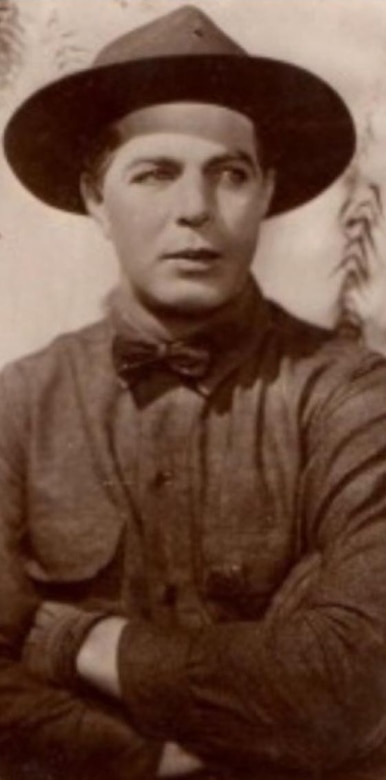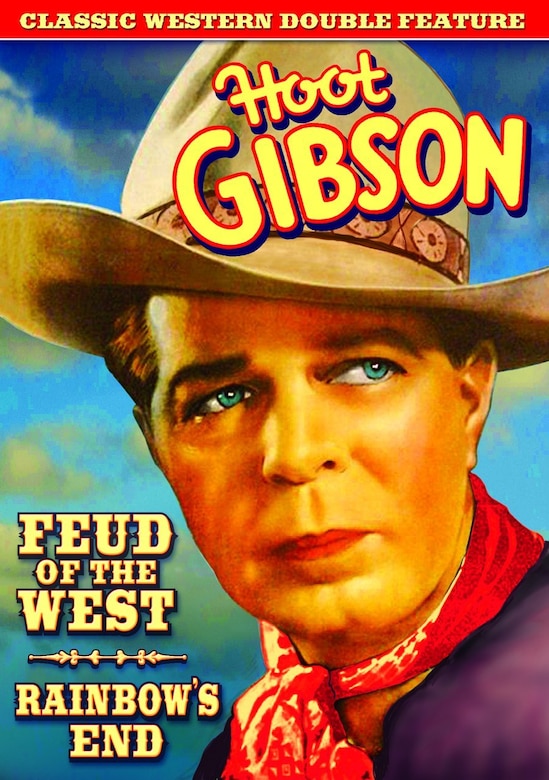Aug. 3, 2021 | , DOD News
Edmund Richard "Hoot" Gibson was born on a ranch, Aug. 6, 1892, in Tekamah, Nebraska, where he learned to ride horses.

When he was 7, Gibson's family moved to another ranch in California, where he became even more proficient at riding. As a teenager, he started bronc riding at area rodeos.
He earned the nickname "Hoot Owl" because he worked as a bicycle messenger for Owl Drug Company. Another version of the story is that he used to go cave exploring to look for owls. The name was later shortened to "Hoot."
In 1910, film director Francis Boggs was looking for experienced cowboys to appear in his silent film "Pride of the Range." Gibson and Tom Mix, another future star of Western films, were hired.

Gibson made a second film for Boggs in 1911. After a deranged employee killed Boggs, director Jack Conway hired Gibson to appear in the 1912 Western "His Only Son."
However, acting was just a side gig, and Gibson continued making his living in rodeos.
In 1912, he won the all-around championship at the famous Pendleton Round-Up in Pendleton, Oregon, and the steer roping world championship at the equally famous Calgary Stampede in Canada.
After World War I started in 1917, Gibson joined the Army and served as a sergeant in France in the newly formed Tank Corps.

After the war, he continued to compete in rodeos, and he also starred in silent cowboy pictures, including some with the great film director John Ford.
From the 1920s through the 1940s, Gibson was a major film attraction, ranking second only to Tom Mix as a Western film box-office draw. He successfully made the transition to sound films and, as a result, became a highly paid performer.
He also appeared in his own comic books and was the most popular motion picture cowboy until singing cowboys such as Gene Autry and Roy Rogers became even more popular.

Films he appeared in include: "Cheyenne's Pal" (1917), "Straight Shooting" (1917), "The Secret Man" (1917), "A Marked Man" (1917), "The Fighting Brothers" (1919), "The Black Horse Bandit" (1919), "Rustlers" (1919), "Gun Law" (1919), "The Gun Packer" (1919), "By Indian Post" (1919), "The Trail of the Holdup Man" (1919), "The Wild, Wild West" (1921), "The Long, Long Trail" (1929), "The Winged Horseman" (1929), "Trigger Tricks" (1930), "Clearing the Range" (1931), "Powdersmoke Range" (1935), "Rainbow's End" (1935), "Feud of the West" (1936), "The Painted Stallion" (1937), "Wild Horse Stampede" (1943), and "Trigger Law" (1944).
He also made cameo appearances in "The Horse Soldiers" in 1959 and in "Ocean's 11" in 1960.
Gibson died of cancer in 1962 in Woodland Hills, California, and was interred in the Inglewood Park Cemetery in Inglewood, California.
He has a star on the Hollywood Walk of Fame and was inducted into the Western Performers Hall of Fame at the National Cowboy & Western Heritage Museum in Oklahoma City, Oklahoma.








No comments:
Post a Comment